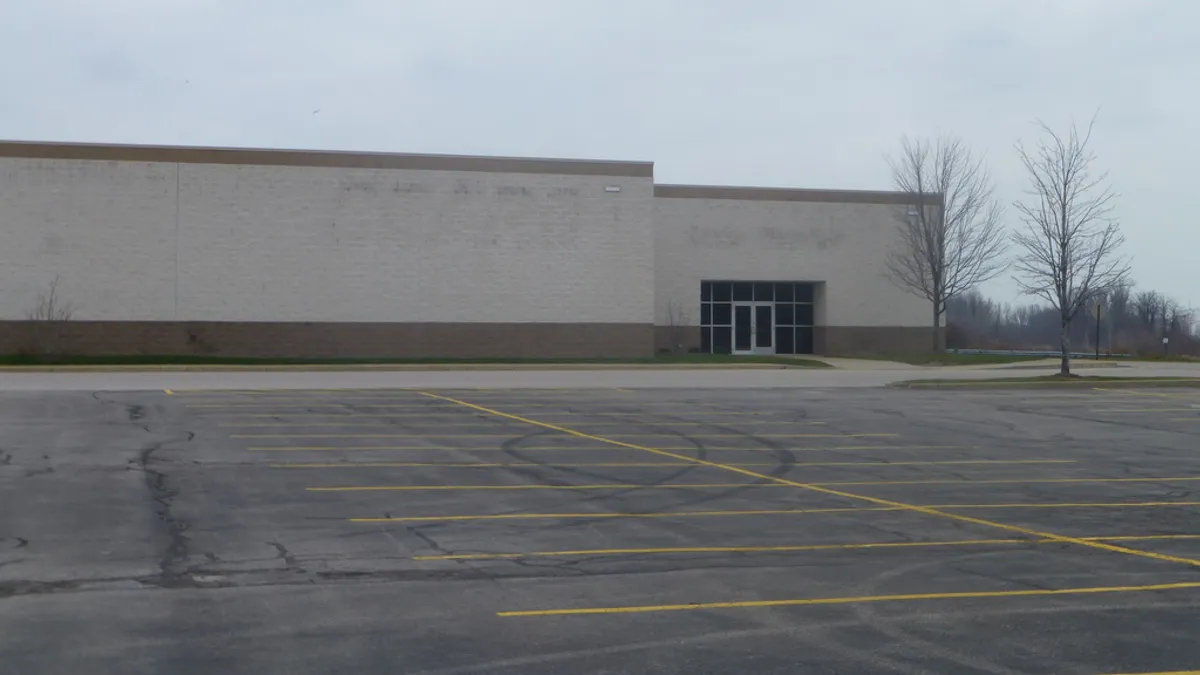Dive Brief:
- The recent closures of 63 Sam's Club stores and several Kroger stores reflects grocers' growing focus on productivity and getting the most out of existing stores, according to Supermarket News.
- As pricing pressure and e-commerce adoption grow, grocers are taking a hard look at store performance, and closing unprofitable outlets. Local reports indicate that all six of the Kroger stores slated to close — two in Peoria, Ill.; two in Memphis, Tenn.; and single stores in Clarkdale, Miss., and Brownwood, Texas. — were not performing well.
- Analysts interviewed by SN expect store closures like these to increase as the year goes on.
Dive Insight:
Walmart's decision to close 63 Sam's Club stores on the same day it announced raises for its hourly workers was a poor one, to say the least. But its decision to shutter those underperforming club outlets and convert 12 of them to e-commerce fulfillment centers, industry observers agree, was tough but necessary.
Not so long ago, Walmart might have invested in those locations and tried to turn them around. But with pricing pressure increasing and e-commerce promising to make physical locations less and less relevant, retailers are taking a hard look at stores and asking, "What are you doing for me right now?" Closures like this are set to increase this year and may accelerate in the coming years, Burt Flickinger, managing director of Strategic Resource Group told Supermarket News.
Even top performers like Trader Joe's and Hy-Vee have slowed their growth lately. The latter has been very successful moving into the Twin Cities market of late, and has stolen share from incumbents Target and Supervalu-owned Cub Foods. But as Hy-Vee CEO Randy Edeker recently told The Star Tribune, the company wants to step back and assess its approach to the market.
Kroger, meanwhile, is convinced that it can squeeze more money out of its 2,800 current stores by cutting costs and investing in data science. The "Restock Kroger" plan aims to, among many other initiatives, tailor each store location to the shoppers that frequent it. During the unveiling of the plan last fall, chief technology officer Chris Hjelm used pet products as an example: If the data determines that a particular location has a lot of pet owners, managers might expand the pet aisle or create a special display with best-selling pet food, toys and other best-sellers. Every item, company executives stressed, must earn its place on store shelves.
Walmart's round of Sam's Club closures points to the influence e-commerce growth promises to have on store decisions. The mega retailer has established itself as a leader in online ordering and store pickup, and is tinkering with home delivery fulfillment. Its physical stores will always be sales leaders, but as more of its customers move online, the retailer needs to free up resources for faster, more efficient order fulfillment.
At the same time that large chains like Walmart and Kroger are slowing their growth, price-focused disruptors like Aldi, Grocery Outlet and Sprouts Farmers Market are hitting the gas. It'll be interesting to see these two strategies battle it out in competitive markets across the country.









